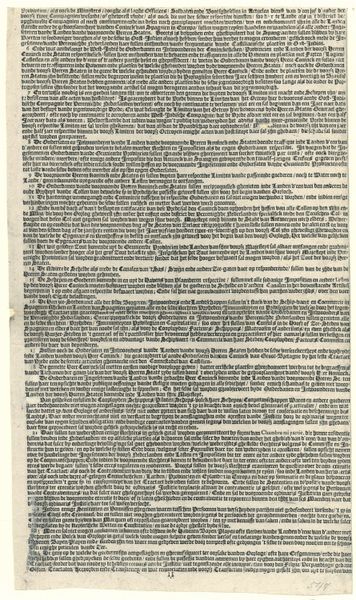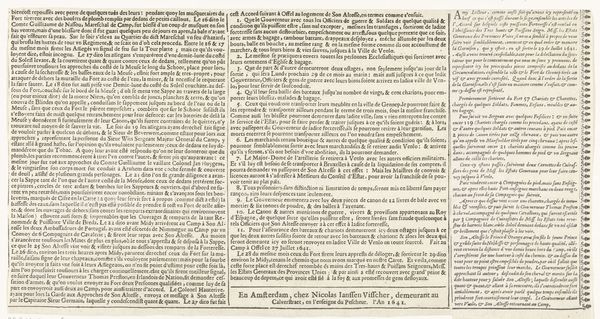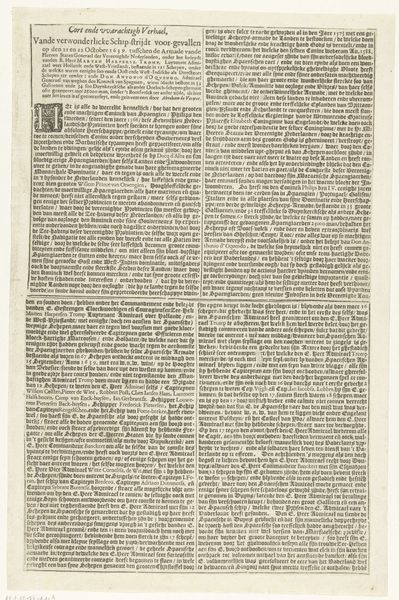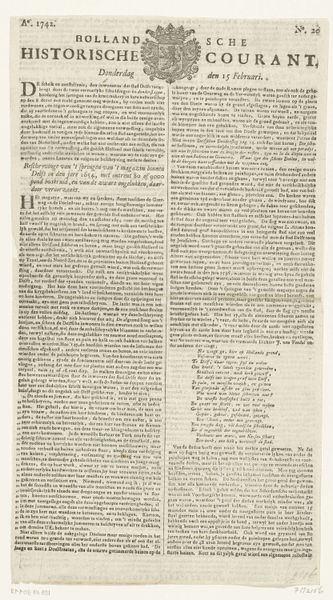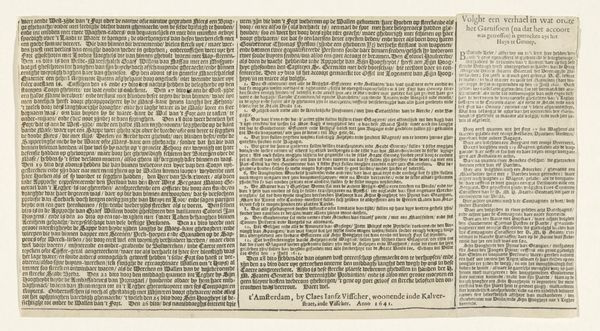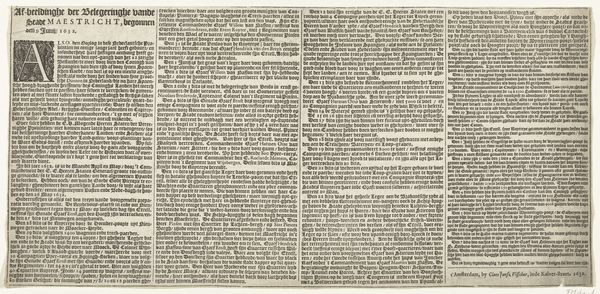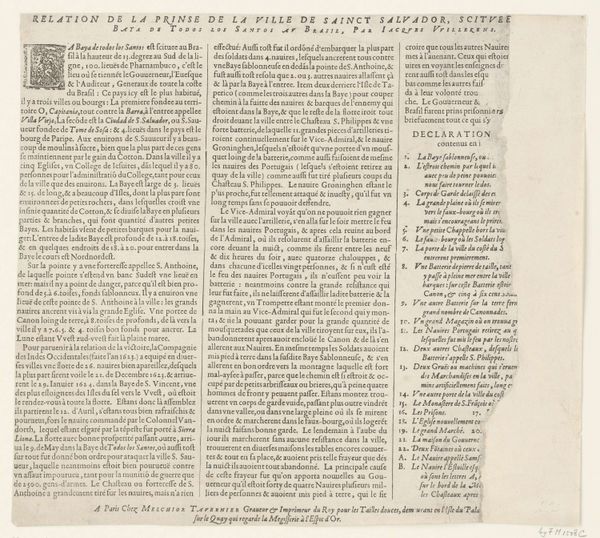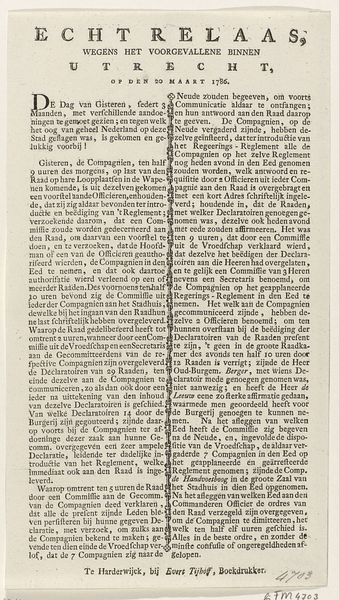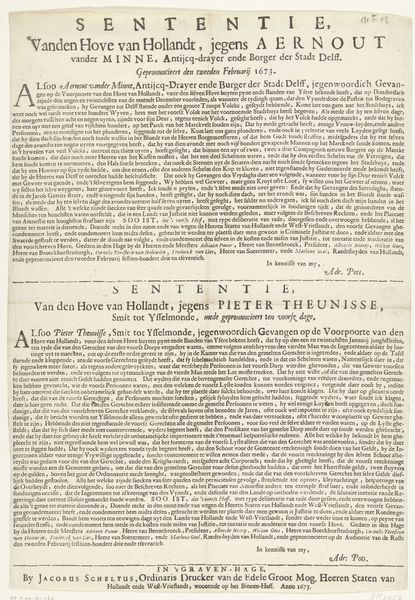
Tekstblad bij de kaart van het doorbreken van de Franse linies in Brabant (linkerhelft), 1705 1705
0:00
0:00
annabeeck
Rijksmuseum
print, paper, ink
# print
#
paper
#
ink
#
history-painting
Dimensions: height 312 mm, width 174 mm
Copyright: Rijks Museum: Open Domain
Curator: Let's turn our attention to this interesting print from 1705, titled "Tekstblad bij de kaart van het doorbreken van de Franse linies in Brabant," or "Text Sheet accompanying the map of breaking through the French lines in Brabant." Editor: My first impression is of intense detail. The texture created by the tightly packed letters is almost overwhelming; it appears so dense. I feel like I could spend hours trying to decipher every word, but the impact is perhaps not on the words, but rather on its overall monumental and architectural presence. Curator: Indeed. The print, rendered in ink on paper, details a specific historical moment: the breaking of the French lines in Brabant. What interests me is how this text participates in the theater of war; the way it constructs and disseminates a certain narrative about power, strategy, and victory. Editor: Absolutely, and from a formal standpoint, note the use of crisp, clear typography. It aims for clarity, despite the inherent complexity of military operations. The print also incorporates visual elements, doesn't it, such as that ornamented initial "D" which serves as a sort of miniature landscape within the text itself, drawing attention to this area as an access point. It is also reminiscent of much older hand illuminated texts, although this one relies on replicable print technology to broadcast its propaganda. Curator: That initial "D" situates the text within the historical conventions of storytelling, a deliberate move to frame the account as authoritative. However, by the very nature of describing a military incursion, it inevitably exposes the frailty of borders, national sovereignty, and the countless lives irrevocably altered by military campaigns. Editor: Do you think that contrast—between the visual encoding of authority, that crisp black lettering so neatly arranged—and the chaotic content to which it refers creates a kind of cognitive dissonance? Is that its goal, I wonder, to simultaneously reinforce and yet obscure through over-formatting a complex picture. Curator: Precisely! And let’s also remember who had access to these prints and whose perspectives were elevated. I find it productive to analyze what voices are excluded, actively or otherwise. Editor: Thinking about this piece as a linguistic object—so densely layered with historical and social context—has expanded my understanding of the visual choices that organize and frame the chaotic and rather tragic contents of this so-called "Verhaal." Curator: And for me, thinking about this object reminds me that official narratives of conflict are never neutral. There are complex issues of national identity, power, and representation bound in these proclamations.
Comments
No comments
Be the first to comment and join the conversation on the ultimate creative platform.
